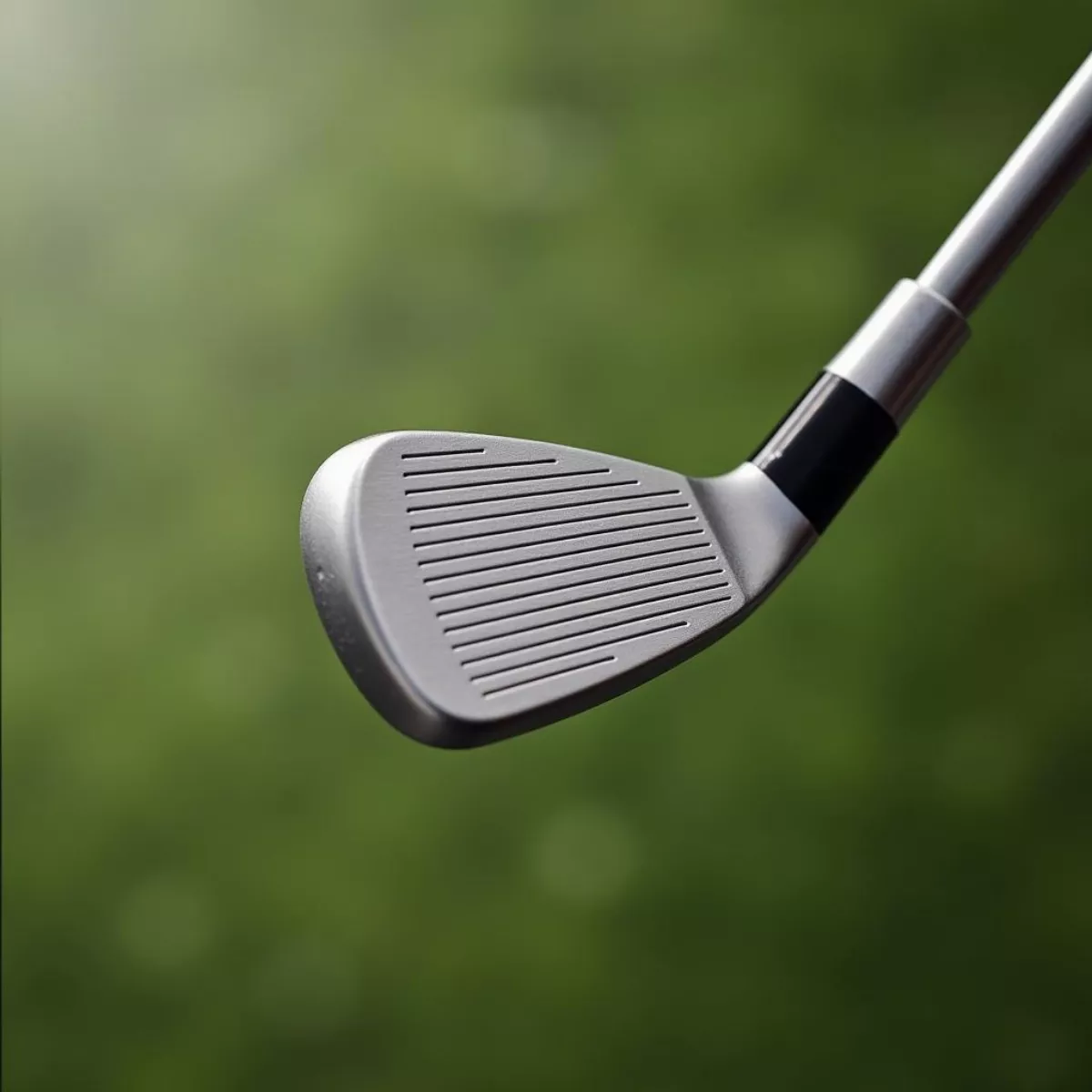Golf is a sport steeped in tradition, with various clubs designed to excel in specific situations. One such specialized club is the driving iron. Whether you’re a novice golfer or a seasoned pro, understanding what a driving iron is and how to effectively use it can significantly enhance your performance on the course. In this comprehensive guide, we will break down the driving iron, its distinct features, benefits, and tips for optimal use.
What Is a Driving Iron?
A driving iron is a type of golf club specifically designed for long-distance shots from the tee or the fairway. Unlike traditional drivers, which have larger clubheads, driving irons feature a more compact and heavier design, resembling an iron club but built for distance and lower loft. This unique design offers golfers several advantages, such as better control, accuracy, and easier play from various lies.
The Evolution of the Driving Iron
Originally made from forged metals, today’s driving irons are often crafted from advanced materials like stainless steel or titanium to enhance durability and performance. They come in various lofts, typically between 16 to 20 degrees, equivalent to 2 or 3 iron clubs (or even numbered clubs). The intent behind the driving iron’s design is to combine the precision of an iron with the distance capabilities of a wood, making it a versatile part of a golfer’s bag.
 Close-up of a driving iron
Close-up of a driving iron
Why Use a Driving Iron?
Understanding when and why to use a driving iron can make a difference in your game. Here are some key reasons:
- Control: The heavier clubhead offers better stability, allowing for more controlled swings. This is crucial for players who struggle with accuracy using a driver.
- Workability: Many golfers appreciate the ability to shape their shots with a driving iron. The smaller clubhead allows for enhanced shot manipulation.
- Low Trajectory: Driving irons produce a lower ball flight, which can be advantageous in windy conditions or when navigating trees.
- Versatility: Driving irons can be used effectively from the tee box, on the fairway, or even in certain rough situations.
How to Choose the Right Driving Iron
Selecting the right driving iron involves considering several key factors:
| Factor | Description |
|---|---|
| Loft | Generally between 16-20 degrees; choose based on desired distance. |
| Shaft Length | Longer for increased distance but could reduce control. |
| Flexibility | Consider your swing speed – choose regular, stiff, or extra stiff. |
| Grip | Make sure the grip size is comfortable for your hand. |
| Material | Look for advanced materials for better performance and forgiveness. |
Tips for Selecting the Perfect Fit
- Test Different Models: Take the time to try various driving irons at a local pro shop or during a fitting session.
- Focus on Comfort: Ensure the weight and grip are comfortable – this promotes fluidity in your swing.
- Consult a Professional: Sometimes, a fitting by a pro can uncover options you might not consider on your own.
 Golfer selecting a driving iron
Golfer selecting a driving iron
How to Hit a Driving Iron Effectively
Improper use of a driving iron can lead to frustration. Here’s a step-by-step guide to hitting it effectively:
- Stance: Place your feet shoulder-width apart with the ball positioned slightly forward in your stance (towards your left foot).
- Grip: Use a firm grip, but do not choke the club. Your hands should be in an athletic position.
- Backswing: Focus on a smooth and controlled backswing. Make sure your body rotates with minimal lateral movement.
- Downswing: Initiate the downswing with your lower body. Aim to generate power from your legs instead of just your arms.
- Follow Through: End with a high finish, ensuring your weight shifts onto your front foot.
Common Mistakes to Avoid
- Ball Positioning: Too far back in your stance may lead to thin shots; too far forward can result in popping the ball up.
- Over-swinging: Many golfers tend to swing too hard with a driving iron. Focus more on control than power.
- Poor Club Selection: Use a driving iron in appropriate conditions. It’s not a replacement for a driver in every scenario.
Understanding the Driving Iron vs. Other Clubs
To appreciate the benefits of the driving iron, it’s vital to differentiate it from other clubs in your bag. Here’s a brief comparison:
| Feature | Driving Iron | Traditional Driver | Hybrid |
|---|---|---|---|
| Clubhead Size | Smaller | Larger | Medium |
| Typical Loft | 16-20 degrees | 8-12 degrees | 16-25 degrees |
| Shaft Length | Medium | Long | Short to Medium |
| Distance Control | High | Moderate | Moderate |
| Error Forgiveness | Moderate | High | High |
| Shot Shape | Controllable | Tend to be straight | Controllable |
Practical Use Cases
- Driving Iron: Ideal for tight fairways or during windy days.
- Traditional Driver: Best for open courses needing maximum distance off the tee.
- Hybrids: Great for versatility and hitting from various lies.
 Golfer using driving iron on tee box
Golfer using driving iron on tee box
Conclusion
Learning how to effectively utilize a driving iron can be a game-changer for many golfers. With its unique benefits, including control, workability, and lower trajectory, this club can help you refine your game.
Key Takeaways
- A driving iron provides the blend of distance and accuracy desired in long shots.
- Selecting the right driving iron involves considering loft, shaft length, and material.
- Use proper techniques when hitting a driving iron for better results.
- Familiarize yourself with the differences between a driving iron and other clubs to maximize its advantages.
FAQ About Driving Irons
Q1: Can beginners use a driving iron?
Absolutely! Beginners can benefit from the control and accuracy a driving iron offers over a traditional driver.
Q2: How does a driving iron compare to a hybrid club?
While both clubs aim for versatility, hybrids offer more forgiveness. Driving irons provide better control for shaped shots.
Q3: What lie conditions are best for a driving iron?
A driving iron excels in tight lies, on the fairway, and during windy conditions.
Q4: Is it worth investing in a driving iron?
If you’re looking to improve your long game and have accurate control, a driving iron is a worthy investment.
Q5: What is the typical distance I can expect with a driving iron?
The distance varies by player, but generally, driving irons can reach between 200-240 yards with a proper swing.
Q6: How do I maintain my driving iron?
Regular cleaning after each round and periodic checks for wear can keep your driving iron in top condition.
Q7: Should I replace my driving iron regularly?
Like any golf club, replace your driving iron if it shows significant wear or if newer technology enhances your game.
Q8: Can I use a driving iron in all weather conditions?
Yes, but be mindful of how wet conditions may affect your grip and swing.
Q9: What swing speed is ideal for a driving iron?
Driving irons suit a variety of swing speeds, but golfers seeking high control often prefer them.
Q10: Can I get fitted for a driving iron like other clubs?
Definitely! Professional fittings can help you find the optimal driving iron for your swing.
Feel free to reach out to fellow golfers or local pros for more insights, and don’t hesitate to get your hands on a driving iron to gauge how well it fits your style! Enjoy your time on the course!